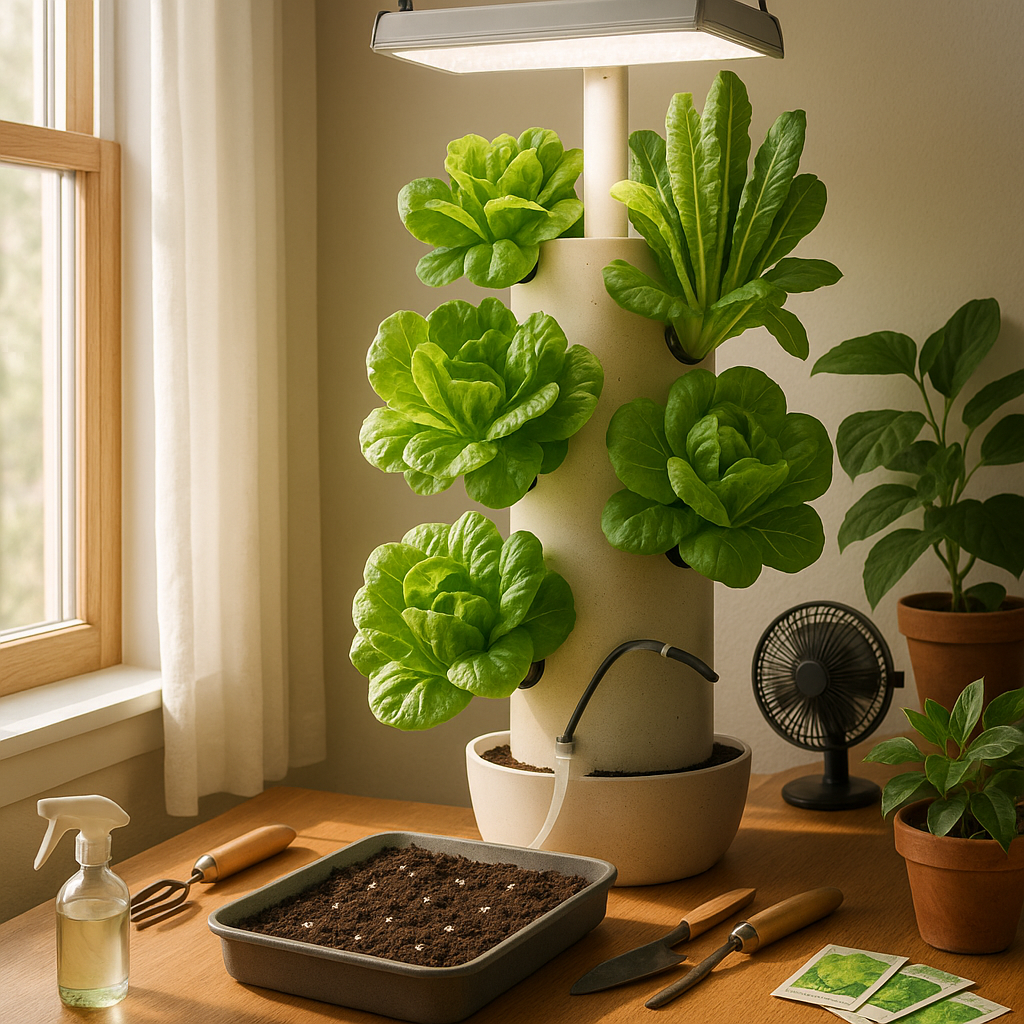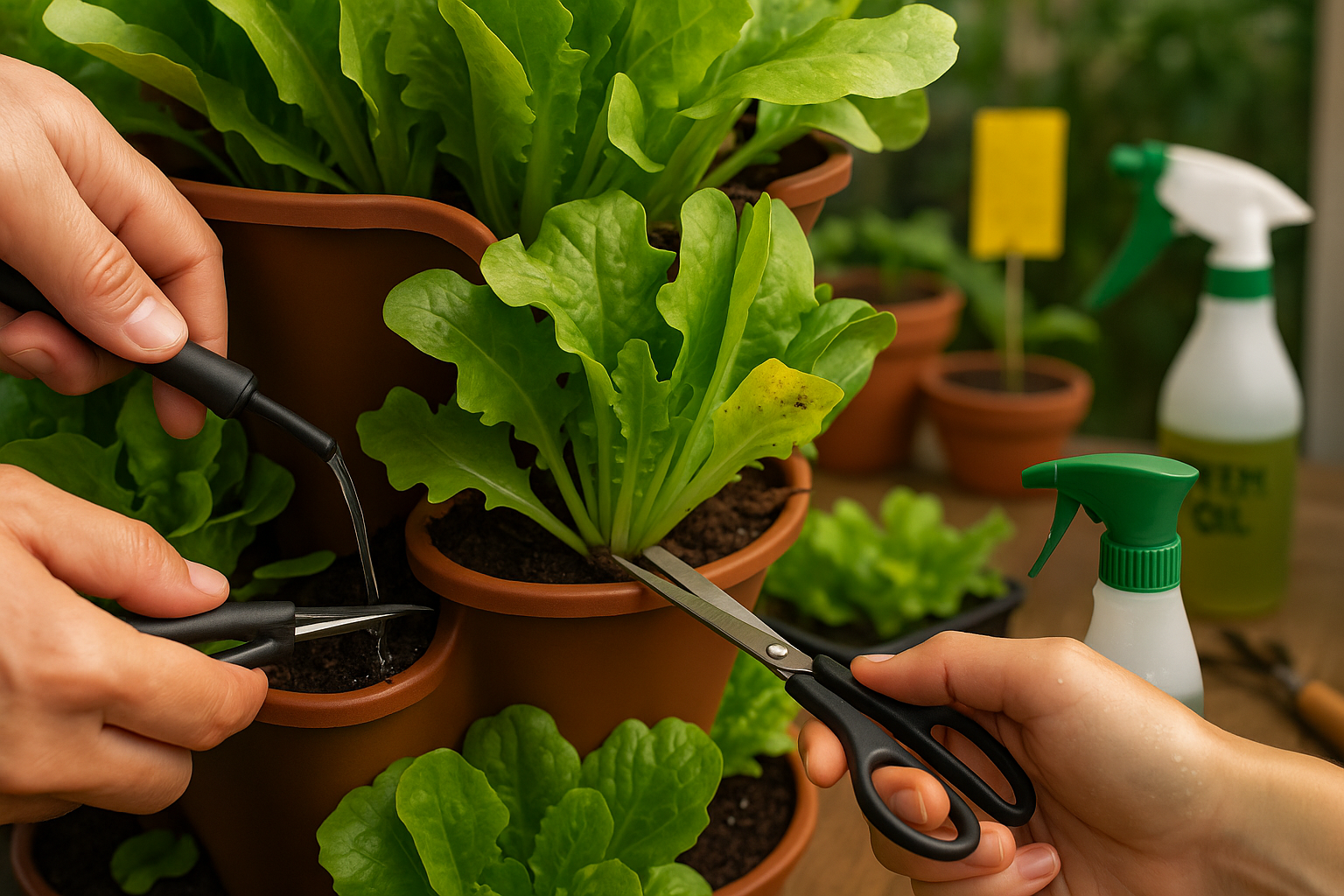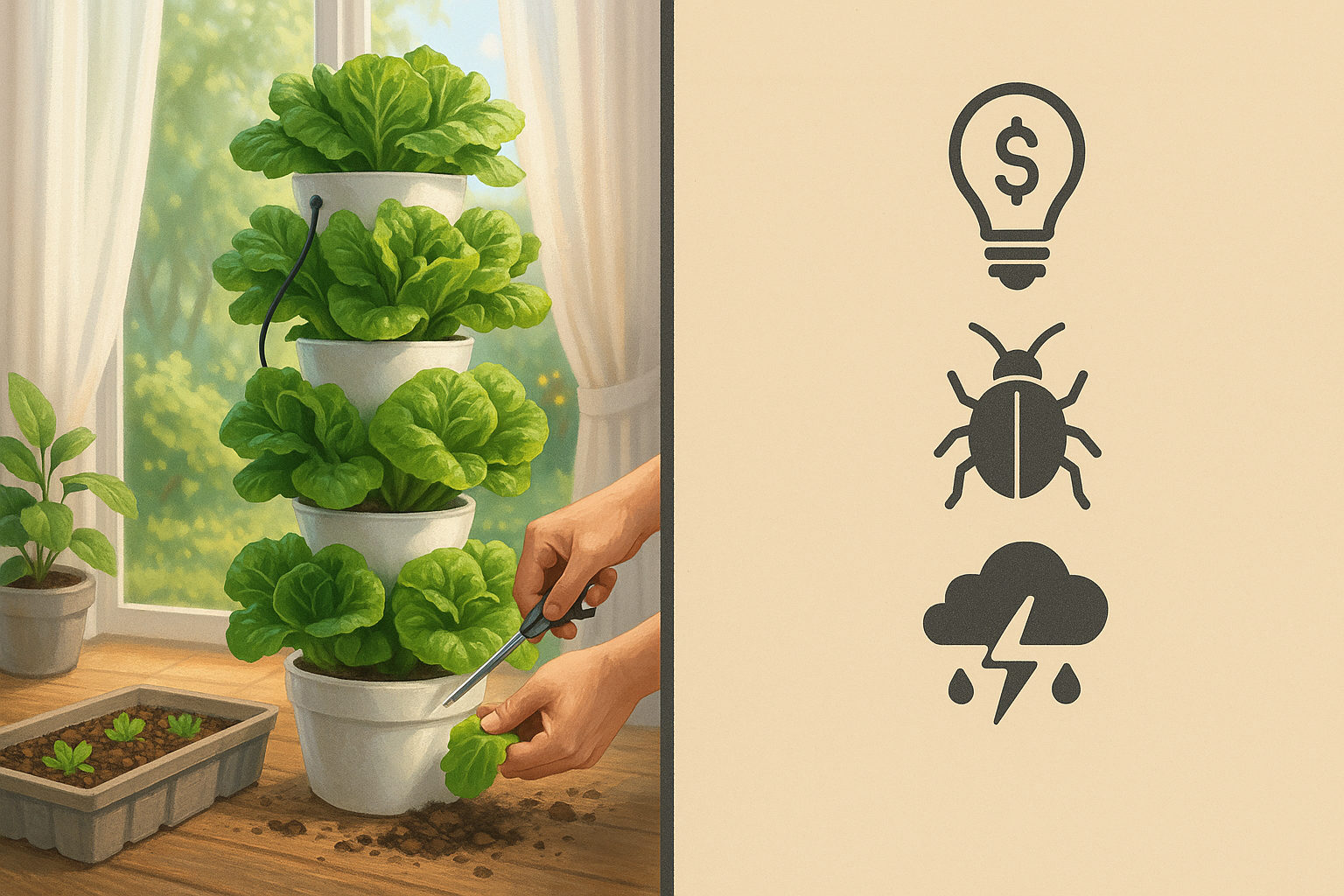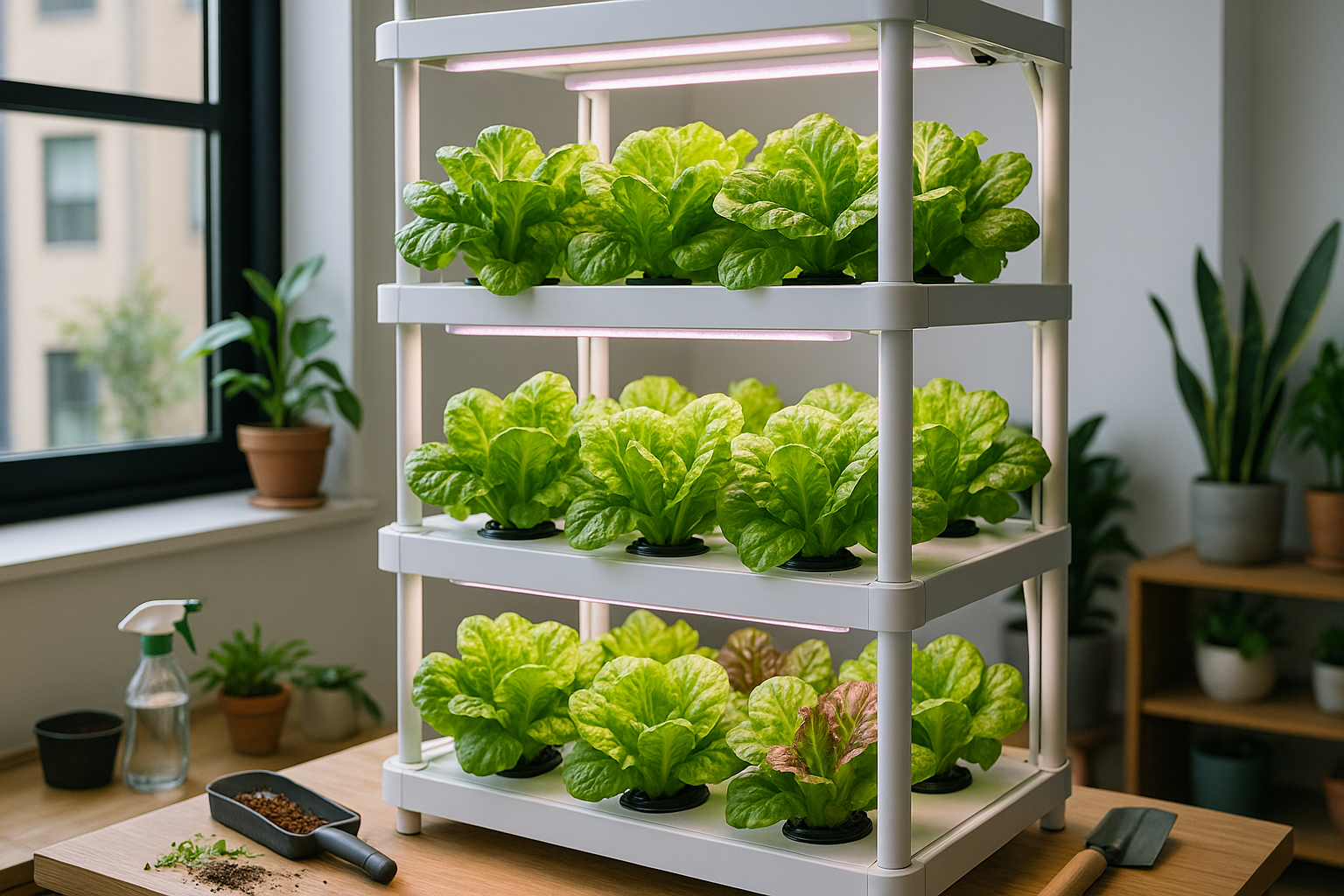Introduction to Vertical Lettuce Growing

Vertical lettuce farming is quickly becoming a popular choice for growers eager to maximize yield and minimize space, whether you’re nurturing plants in a tiny urban apartment or working with a larger outdoor setup. But what exactly is vertical gardening, and why is lettuce such a great candidate for it? At its core, vertical gardening involves cultivating plants in stacked layers or on upright structures, rather than spread out over horizontal ground. This innovative approach is perfect for leafy greens like lettuce, which thrive in close quarters and mature relatively quickly, making them a smart pick for gardeners looking to get the most bang for their buck.
When it comes to vertical lettuce farming, there are two main approaches: indoor and outdoor systems. Indoor vertical gardens often rely on LED grow lights, controlled temperatures, and hydroponic setups, making year-round lettuce production possible regardless of weather. They’re ideal for urban dwellers or those with limited yard space—but they do come with unique considerations, like managing artificial lighting and ensuring enough airflow.
On the other hand, outdoor vertical lettuce farming leverages natural sunlight and ventilation, and can often handle larger volumes at a lower startup cost. However, outdoor systems may face challenges from pests and changing weather conditions.
Throughout this post, we’ll break down the key advantages of vertical lettuce farming, such as space efficiency, faster cycles, and easier harvesting. We’ll also explore important considerations—including system selection, watering methods, and pest management—to help you choose the right approach for your space and goals. Whether you’re dreaming of a year-round indoor salad bar or maximizing your backyard harvest, vertical lettuce farming is a fresh, practical way to grow.
Choosing the Right Vertical System for Lettuce

When selecting the best vertical system for growing lettuce, you’ll want to weigh your options between hydroponic towers, stacked soil planters, and wall pockets—each offering distinct benefits for different needs.
Hydroponic Towers
Hydroponic towers are a fantastic choice if you’re focused on maximizing yield in minimal space. These soil-free systems let you grow dozens of heads of lettuce vertically with easy nutrient management and faster growth. However, they come with a higher upfront cost and require regular monitoring.
Stacked Soil Planters
Stacked soil planters are budget-friendly and forgiving for beginners. They use traditional potting mix while making the most of sunny patios or compact balconies. Although they yield slightly less than hydroponics, their low-tech setup makes them easier to maintain for hobbyists.
Wall Pockets
Wall pockets are perfect for tight spaces and small-scale growing—think indoor kitchens or outdoor fences. They do have some limitations, such as smaller root space that restricts overall yield, and they can dry out quickly.
Indoor vs. Outdoor Considerations
- Indoor setups: Hydroponic towers shine if you have the investment and space for grow lights, allowing year-round, pest-free harvests.
- Outdoor setups: Stacked planters and wall pockets take advantage of natural sunlight, though you’ll want to keep outdoor temperature swings in mind.
Ultimately, if your goal is high output in a small area and you have the budget, hydroponic towers are the way to go. For modest yields and simpler care, stacked planters or wall pockets are ideal—especially when space or funds are tight. Always consider your available space, how much lettuce you want to grow, and how much time and money you’re willing to invest before diving in.
Setting Up Your Vertical Lettuce Garden

Starting your vertical lettuce garden is both rewarding and straightforward with the right approach. Begin by picking an ideal spot: indoors, choose a south-facing window or a bright room with at least six hours of indirect sunlight, or supplement with full-spectrum LED grow lights to keep plants thriving even when daylight is limited.
Outdoors, select a location that gets morning sun but is shielded from harsh afternoon rays; vertical gardens near a fence or wall provide extra support and some weather protection.
For irrigation, drip systems or self-watering planters are handy, ensuring your lettuce roots stay moist without becoming waterlogged. Indoors, be sure pots have drainage trays to catch excess water.
When it comes to seed or starter choices, opt for fast-growing, compact lettuce varieties like Buttercrunch, Little Gem, or Romaine, as they perform best in the confined spaces of a vertical setup.
Indoors, maintain your room temperature between 60-70°F (15-21°C) and use a small fan to circulate air, which helps prevent mold and regulates humidity—ideal humidity levels hover around 40-60%.
Outdoors, monitor the weather: if temperatures dip below freezing or a heatwave hits, use row covers or shade cloths to protect your plants.
Whether indoors or out, stagger your plantings every two weeks for a continuous harvest and check moisture frequently since vertical gardens tend to dry out faster than traditional beds.
With these careful choices, your vertical lettuce garden will be both space-saving and productive, letting you enjoy homegrown greens almost year-round.
Key Care and Maintenance Tips

Keeping your vertical garden healthy starts with a smart watering schedule. Since these systems typically drain faster than traditional beds, check moisture daily, especially during warmer months. Early morning watering helps prevent evaporation and reduces disease risk. Using drip irrigation or self-watering setups can save time and ensure even hydration.
Nutrient management is just as important. Vertical gardens often need regular feeding because water runoff can wash nutrients from the soil. Use a balanced, water-soluble fertilizer every two to four weeks, and always follow the manufacturer’s directions. For organic gardens, compost tea or diluted fish emulsion provides plants with a gentle, steady boost.
Pest prevention is all about vigilance. Inspect your plants regularly for common culprits like aphids, spider mites, and whiteflies. Remove plant debris that can harbor pests, and use sticky traps, insecticidal soap, or neem oil as needed. Always treat pests promptly to prevent infestations from spreading in the tight quarters of a vertical setup.
Pruning is essential for airflow and plant vigor. Snip dead or yellowing leaves weekly and trim overgrown stems to prevent crowding. For crops like herbs and salad greens, regular harvesting not only encourages new growth but also helps you enjoy a steady supply. Pick from the top third of the plant to promote lush regrowth.
By staying consistent with watering, feeding, pest control, and gentle pruning, your vertical garden will thrive, providing healthy plants and bountiful harvests even in small spaces.
Benefits and Challenges of Vertical Lettuce Growing

Vertical lettuce growing offers many compelling benefits, making it a popular choice for both urban gardeners and commercial producers. One of the biggest advantages is space efficiency: by stacking plants in vertical towers or racks, you can yield large harvests even in small spaces like balconies, garages, or spare rooms. This method is perfect for those with limited outdoor space or poor soil conditions.
Another key benefit is the potential for year-round harvesting. Controlled environments enable you to grow fresh lettuce regardless of the season, ensuring a steady, local supply. Additionally, vertical systems are highly efficient in resource use. Innovations such as hydroponics or aeroponics can reduce water consumption by up to 90% compared to traditional soil farming, and targeted nutrient delivery helps minimize waste.
Challenges to Consider
However, there are some challenges to keep in mind. Initial startup costs for equipment and lighting can be high, especially for indoor setups. There’s also a learning curve: growers need to familiarize themselves with technical aspects like nutrient balancing, light cycles, and pest management. Energy use can increase if you rely on artificial lighting, which impacts both your bills and environmental footprint.
Tips for Success
- Start small with a basic setup to build your knowledge before scaling up.
- Look for research grants or secondhand equipment to reduce costs.
- Choose energy-efficient LED grow lights and use timers to avoid unnecessary power consumption.
- Engage with online gardening communities or local workshops to expand your skills.
With thoughtful planning and a willingness to learn, even beginner gardeners can enjoy the rewards of vertical lettuce growing—fresh, healthy produce grown right at home.
Maximizing Success
When growing lettuce vertically, encountering common issues like bolting, leaf discoloration, or slow growth can be frustrating—but they’re all solvable with a little troubleshooting.
Dealing with Bolting
Bolting—when lettuce suddenly goes to seed and turns bitter—is often triggered by excessive heat or irregular watering. Keep your vertical garden in a cool spot and use a timer to water consistently.
Managing Leaf Discoloration
Leaf discoloration, especially yellowing, may indicate nutrient imbalances or low light. Check your fertilizer schedule, rotate plants closer to a light source, or use full-spectrum grow lights to keep them vibrant.
Encouraging Growth
For slow growth, double-check that your water has the right pH (between 5.5 and 6.5) and ensure your roots aren’t crowded—trim and space seedlings if necessary.
Leveling Up Your Vertical Garden
- Companion Planting: Mix lettuce with herbs like basil or chives, which can naturally deter pests and save space.
- Automation: Simple drip irrigation kits or plug-and-play hydroponic systems can handle watering and fertilizing without daily hassle.
- Smart Technology: Integrate smart sensors and controllers to monitor moisture, light, and nutrient levels from your smartphone, alerting you before problems escalate.
Scaling Up
Modular vertical racks make it easy to expand—start with a single unit, then stack higher or add more columns as you go.
Collaborate with local restaurants or neighbors for fresh salad greens—vertical gardening is just as rewarding as it is efficient when you troubleshoot proactively and embrace new growing techniques.
